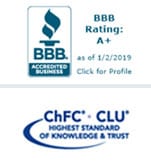
On Friday, Congress reached an agreement on a record-setting $2 Trillion coronavirus relief package. The bill includes direct payments to American taxpayers as well as expanded unemployment benefits for individuals laid off during the pandemic. Here’s an overview:
How much money will I get in my coronavirus check?
Single adults who make under $75,000 a year will receive the full $1,200 relief payment. This includes those with green cards and work visas, as well as individuals on social security. Married couples earning under $150,000 a year will receive $2,400. Head of house filers making less than $112,500 will also receive the full payment. There will also be an additional $500 for each qualifying dependent under age 16.
Individuals making over $99,000, married couples making over $198,000, heads of house making over $146,500 are ineligible for stimulus payments. Payments will be calculated based on your adjusted gross income from either 2019 or 2018 (if you have yet to file). You can calculate your stimulus payment here. Checks are set to arrive in mid-to-late April.
How will the money be sent?
You can think of your coronavirus relief payment as a kind of tax refund. If you receive your tax refund through direct deposit, the IRS will deposit the check directly into your bank account. If you receive tax refunds by mail, your relief check will come that way, too. Funds will be sent to the bank account or mailing address listed on your most recent tax return.
Will the IRS call or email me asking for bank account information?
No. If the IRS needs to communicate with you, they will send you a letter. If you receive a call or email from someone claiming to be an IRS agent, it’s probably a scam.
How should I use my relief check?
In uncertain economic times, how you use a sudden windfall matters. If you don’t need to put your stimulus check toward immediate needs such as bills and groceries, here are a few suggestions:
1. Add to your rainy-day fund
Economists forecast that the pandemic may force the world into a months-long economic “deep freeze” as nations fight to reign in the virus. Already, we’ve seen layoffs and business closures. Under these circumstances, it never hurts to build up your emergency savings. An emergency savings fund should contain enough to meet all of your expenses for 3-6 months, a solid buffer in case you lose your regular source of income.
2. Pay off debt
While the Federal Reserve has dropped interest rates to zero, your credit card company is still charging you interest on your debt. Because credit card debt can carry an interest rate as high as 15%, it’s one of the most expensive kinds of debt to have. Paying down your debt now can spare you hundreds–possibly thousands–of dollars in interest later on.
3. Buy local
If your rainy day fund is well-provisioned and your credit cards all paid off, you can use your relief check to support your community. Restaurants, auto-shops, and other small businesses have been hit hard by coronavirus closures. There are plenty of ways to stay safe while supporting the local economy. You can order what you need from local businesses willing to deliver, give to a local charity, or even buy a few gift cards to support local businesses and distribute to first responders, hospital employees, and others.


Sara McKinney
saractag@gmail.com
As Cowen Tax Advisory Group’s Digital Content Marketing Specialist, Sara provides in-house copywriting and manages the company’s electronic records system, email marketing, and blog.




